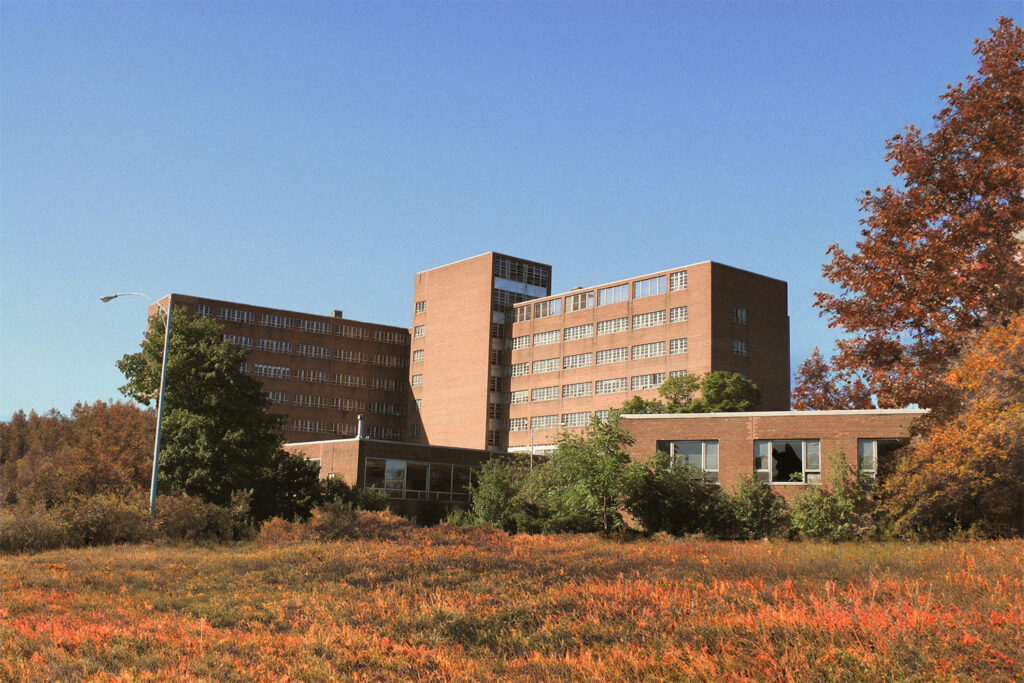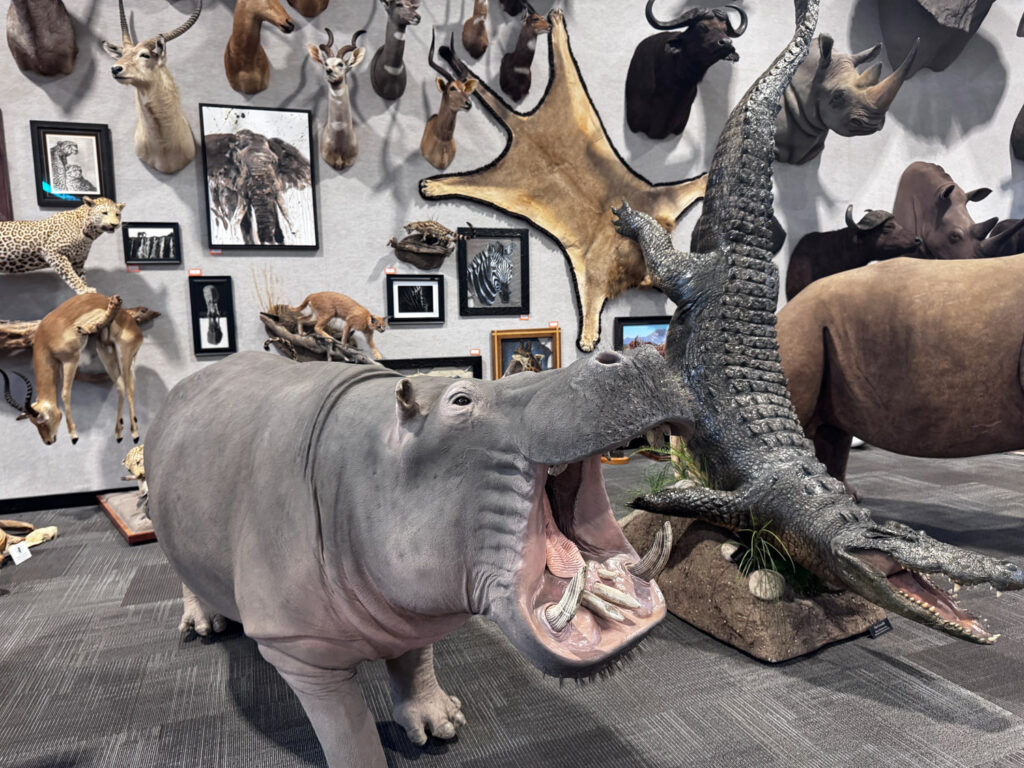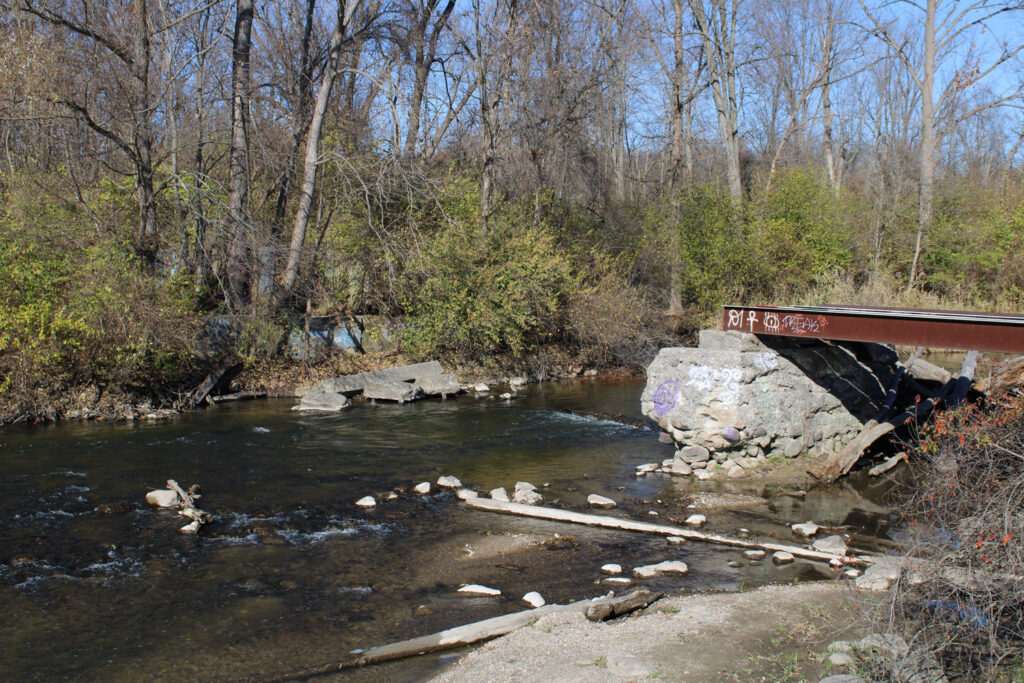Northville — She is said to wander the halls of the asylum where she was killed, still wearing her white dress.
Some Michiganders swear they’ve seen the lady in white who, according to legend, was a patient at the Northville Psychiatric Hospital in the 1960s, when she was killed by a staff member. Her body was never found.
Anyone who grew up near 7 Mile Road in Metro Detroit knows the Northville insane asylum. The sprawling, multi-building campus was built in the 1950s to house Michigan’s mentally disturbed. At one point, the 450-acre facility housed more people than the town of Northville itself.
Now, it’s a pile of rubble the city wants to turn into a community park.
But the ghosts—and the tunnels underneath it—likely remain.
The creepy complex was the one place my parents made my siblings and me swear to never explore. They likely were worried about law enforcement’s vowed crackdown on trespassers—and they were right to be. The one time I worked up the courage to scope out the property for myself with some friends, the cops chased us out before we could even get inside.
Plenty of other Michiganders have had better luck. Their pictures hint at just how big and surprisingly self-sufficient the hospital was. It had a swimming pool, a gymnasium, a movie theater, even a bowling alley. A steam plant supplied power for the building via a network of underground tunnels.
When it first opened in 1952, the Northville Psychiatric Regional Hospital was considered a cutting-edge facility and praised for its softer approach toward patients. The hospital emphasized the arts, music, theater, and exercise as a form of therapy. Patients were even encouraged to hold jobs inside the facility, whether in the laundry room or out keeping the grounds.
But the residents in the surrounding Northville neighborhoods don’t remember the facility that way. They remember it as a constant source of “fear and paranoia.”
Starting in the 1980s, the asylum appeared to be losing more patients than it was bringing in. The local paper, the Northville Record, reported asylum escapees constantly, until the hospital was finally shut down in 2003.
One Northville resident who lived near the asylum recalled looking out his window one night to see an elderly bald man wearing a white shirt, pants, and shoes—the classic mark of an asylum patient— standing in his backyard. He was looking at the sky, his mouth wide open, walking in circles. He did that for hours until he finally wandered back in the direction of the asylum.
Many escapees weren’t so docile. In 1991, the Northville Record reported that a patient, who had threatened to kill his mother and children, escaped and was never recovered. Another patient escaped and injured a nearby resident after stealing his car. Suicide attempts in public by runaway patients were also an unfortunate common occurrence.
The situation got so bad that, at one point, Northville residents begged the hospital to remove their town from its name, arguing Northville’s connection to the facility was degrading the town’s reputation. “Over the years, Northville and Plymouth have become a dumping ground for criminals and other unfortunates,” one resident wrote.
The frequent escapes were the consequence of a larger problem within the institution’s walls. Like many facilities of its kind, the Northville Psychiatric Regional Hospital became overcrowded, and its staff overwhelmed. At its peak in the 1980s, it housed nearly 1,000 patients, but had been built to accommodate about 650.
In 1983, the Detroit News released a series of investigative reports that revealed “appalling conditions” inside the asylum. Patients were forced to sleep in the hallways and the gymnasium and appeared malnourished and heavily drugged. Some died in skirmishes with fellow patients or with hospital staff. In 1985, a 20-year-old patient was choked to death by one of three patients who viciously beat him. The resident care aids, who were supposed to be overseeing them, didn’t discover the patient had been killed until another patient informed them, “You have a corpse at the end of the hall.”
One former staff member put it this way: “I concluded it was a kindness to call Northville a psychiatric hospital. People are not treated at Northville; they are warehoused.”
Some Michiganders who managed to explore the property after it was abandoned will say some patients never left. A nearby resident said that while he was driving past the abandoned asylum one night, he saw what appeared to be a white sheet hanging out of one of the hospital’s windows. It was gone the next day, but it soon reappeared on the hospital’s roof. He swears now that it was a white dress, the kind the asylum’s patients used to wear.
Maybe he saw the lady in white.
A close friend of mine, who snuck into the property when we were in high school, told me the tunnels were the worst part. Even though the place had been abandoned years before, there was still a slight hissing in the steam pipes. It felt almost like someone whispering in your ear, he said.
Rumor has it the tunnels were also used to transport patients between buildings during the winter months. My friend said he found a wheelchair in one of the tunnels leading out of the hospital’s main building—and a pair of leather restraints.
No wonder the asylum attracted so many so-called “ghost hunters” throughout the years. In fact, the haunted campus became so well-known that Northville law enforcement had to beg the public every year around Halloween not to try and enter it. They claimed it was for our own safety—and maybe it was.
After years of this, the city finally tore down the entire site in 2023. And now they want to turn it into a public park, with mountain bike trails and ponds.
They haven’t said what will happen to the tunnels below. But my guess is there are plenty of Michiganders eager to find out for themselves.
Kaylee McGhee White is the Restoring America editor for the Washington Examiner, a Tony Blankley fellow for the Steamboat Institute, and a senior fellow for the Independent Women’s Forum. She grew up in Metro Detroit and graduated from Hillsdale College. Follow her on X @KayleeDMcGhee.



